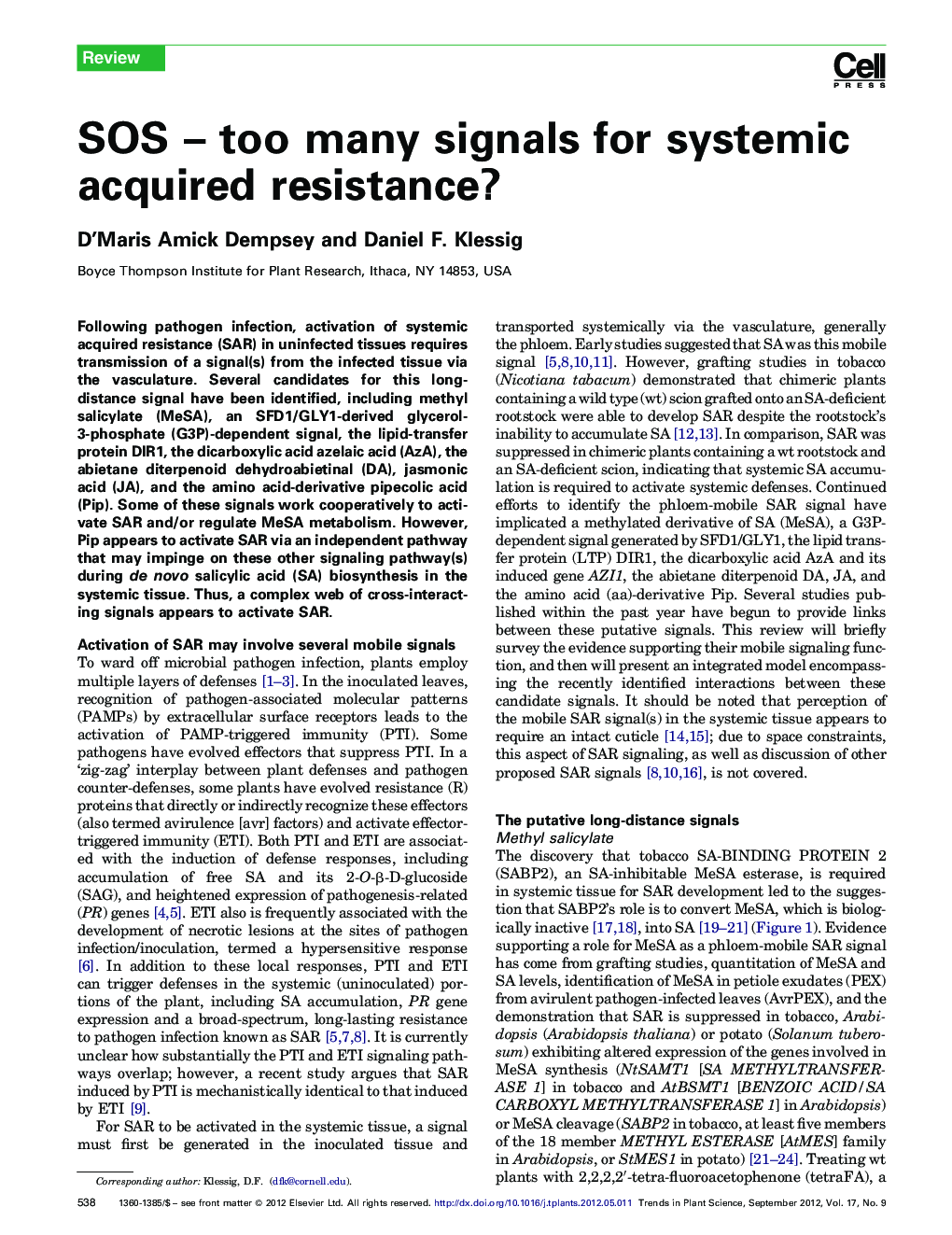| کد مقاله | کد نشریه | سال انتشار | مقاله انگلیسی | نسخه تمام متن |
|---|---|---|---|---|
| 2826321 | 1162224 | 2012 | 8 صفحه PDF | دانلود رایگان |

Following pathogen infection, activation of systemic acquired resistance (SAR) in uninfected tissues requires transmission of a signal(s) from the infected tissue via the vasculature. Several candidates for this long-distance signal have been identified, including methyl salicylate (MeSA), an SFD1/GLY1-derived glycerol-3-phosphate (G3P)-dependent signal, the lipid-transfer protein DIR1, the dicarboxylic acid azelaic acid (AzA), the abietane diterpenoid dehydroabietinal (DA), jasmonic acid (JA), and the amino acid-derivative pipecolic acid (Pip). Some of these signals work cooperatively to activate SAR and/or regulate MeSA metabolism. However, Pip appears to activate SAR via an independent pathway that may impinge on these other signaling pathway(s) during de novo salicylic acid (SA) biosynthesis in the systemic tissue. Thus, a complex web of cross-interacting signals appears to activate SAR.
Journal: - Volume 17, Issue 9, September 2012, Pages 538–545